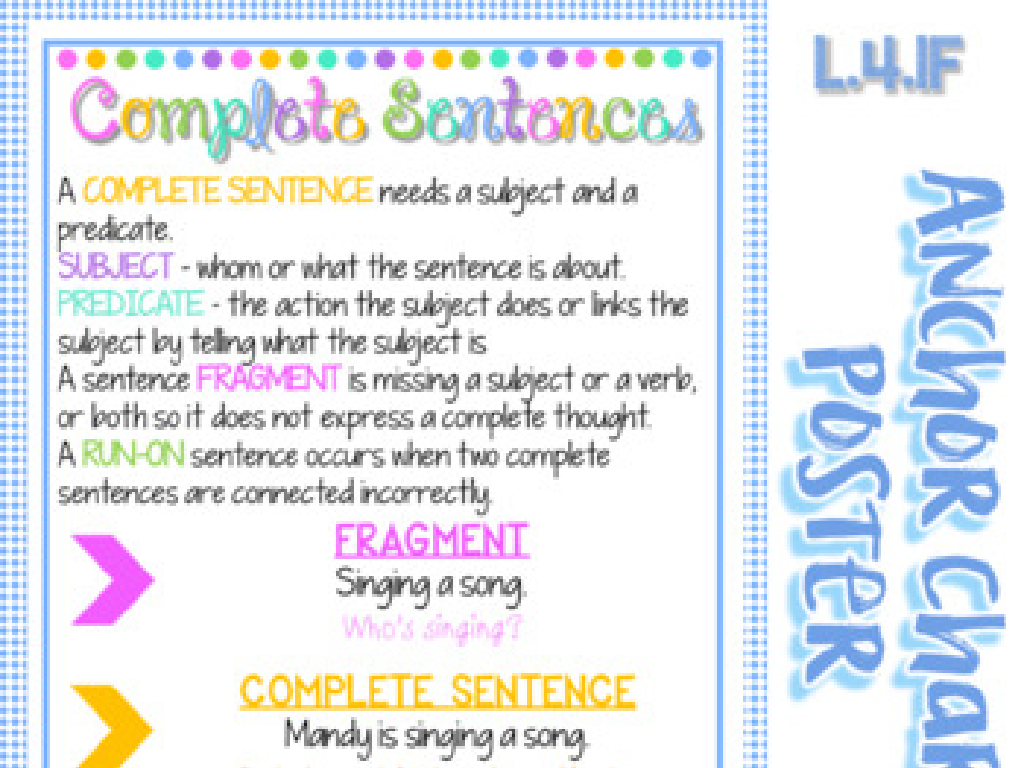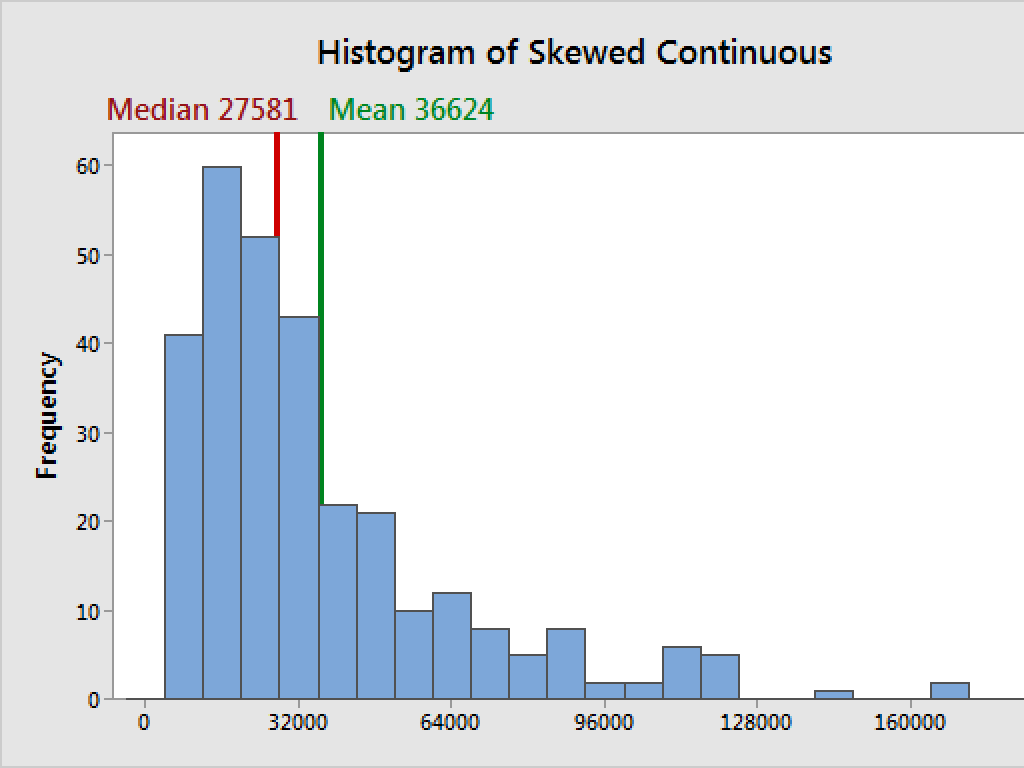Identify Independent And Dependent Variables In Tables And Graphs
Subject: Math
Grade: Sixth grade
Topic: Two-Variable Equations
Please LOG IN to download the presentation. Access is available to registered users only.
View More Content
Identifying Variables in Two-Variable Equations
– Understanding variables in life
– Variables represent things like time, money, or distance.
– Defining two-variable equations
– Equations with pairs of variables that affect each other.
– Independent vs. dependent variables
– Independent variables stand alone; dependent variables rely on others.
– Practice with tables and graphs
– We’ll learn how to spot these variables in different data formats.
|
This slide introduces the concept of variables within the context of two-variable equations, which is a foundational element in understanding algebra and functions. Start by discussing variables in everyday situations, such as the relationship between hours worked and money earned. Explain that in two-variable equations, we deal with pairs of variables that can influence one another. Clarify the difference between independent variables (the cause or input) and dependent variables (the effect or output). Use examples like temperature and ice cream sales, where temperature is independent and sales are dependent. Conclude with an activity where students identify these variables in tables and graphs to solidify their understanding.
Understanding Variables in Equations
– Define a variable in math
– A symbol for a number we don’t know yet
– Variables in simple equations
– In ‘2x + 3 = 7’, ‘x’ is the variable
– Independent vs dependent variables
– Independent: we choose; Dependent: result
– Examples in tables and graphs
– If x is time spent studying, y might be the score on a test
|
This slide introduces the concept of variables, which are fundamental in understanding algebra and equations. A variable is a symbol, like x or y, that represents a number whose value is not yet known. In simple equations, variables stand in for unknown values that we want to solve for. It’s crucial to distinguish between independent variables, which represent a value that is chosen or controlled, and dependent variables, which represent the outcome or result that depends on the independent variable. Use tables and graphs to show real-life examples, such as how the amount of time spent studying (independent variable) can affect a test score (dependent variable). Encourage students to think of other examples where one variable might depend on another.
Understanding Variables in Equations
– Define Independent Variable
– The variable that is changed or controlled in a scientific experiment.
– Identify in Tables
– Look for the variable that is being manipulated, typically found in the first column of a table.
– Recognize on Graphs
– On a graph, it’s usually on the x-axis (horizontal).
– Practice with Examples
– Use class activities to apply these concepts.
|
This slide aims to clarify the concept of independent variables for sixth-grade students. Begin by defining an independent variable as the one that is changed or controlled to see its effect on the dependent variable. When looking at tables, students should be able to identify the independent variable as the one that is being manipulated, which is usually in the first column. On graphs, the independent variable is typically plotted along the x-axis. To reinforce learning, provide examples and class activities where students can practice identifying independent variables in different contexts. Encourage them to ask questions and discuss their observations.
Understanding Dependent Variables
– Define a Dependent Variable
– The outcome we study and expect to change when the independent variable is altered.
– Identify in Tables
– Look for the column that changes in response to another.
– Recognize on Graphs
– Typically plotted on the y-axis and changes with the x-axis values.
– Dependent vs. Independent
– Understand how it differs from the variable that is manipulated (independent).
|
This slide aims to clarify the concept of dependent variables for sixth-grade students. Begin with a definition, emphasizing that a dependent variable is what we measure in an experiment and expect to change when we modify the independent variable. Show examples of tables where the dependent variable is the one that changes as a result of the independent variable’s alteration. On graphs, point out that the dependent variable is usually on the y-axis and changes in response to the x-axis (independent variable). Highlight the difference between dependent and independent variables to solidify their understanding. Use simple, relatable examples like the effect of study time (independent) on test scores (dependent) to illustrate the concept.
Exploring Variable Relationships
– Interaction of variables
– Independent variables are chosen inputs; dependent variables are the outcomes.
– Real-life variable examples
– Temperature and ice cream sales, or study time and test scores.
– Practice with sample tables
– Identify the independent and dependent variables in provided data tables.
|
This slide aims to help students understand the concept of independent and dependent variables within the context of two-variable equations. Begin by explaining that independent variables are the inputs we control or choose, and dependent variables are the outcomes that depend on the independent variables. Use relatable examples like the relationship between temperature and ice cream sales, or study time and test scores, to illustrate these concepts. Then, move on to an interactive practice where students are given sample tables and asked to identify the independent and dependent variables. This will reinforce their understanding and prepare them for analyzing more complex data in graphs and real-world situations.
Graphing Variables: Independent vs. Dependent
– Plot variables on a graph
– X-axis for independent, Y-axis for dependent
– Slope and intercept meaning
– Slope shows rate of change, intercept where line crosses Y-axis
– Practice graph creation
– Use a table of values to draw a graph
– Analyze table to graph
– How does the table data translate to the graph?
|
This slide introduces students to the concept of graphing independent and dependent variables, which is crucial for understanding two-variable equations. Start by explaining that the independent variable is plotted on the x-axis and the dependent variable on the y-axis. Discuss the slope as the rate at which the dependent variable changes for each unit increase in the independent variable, and the y-intercept as the point where the graph crosses the y-axis. Provide a table of variables and guide students through plotting these points on a graph to create a linear equation. Encourage students to think about how changes in the independent variable affect the dependent variable. This will help them understand the relationship between the two when analyzing graphs and tables.
Class Activity: Variable Hunt
– Understand independent vs. dependent variables
– Find variables in scenarios
– Look for the variable that is changed on purpose (independent) and the one that is measured (dependent)
– Work in pairs for discussion
– Collaborate to explain your reasoning
– Share findings with the class
– Practice presenting your thoughts clearly
|
This activity is designed to reinforce the concept of independent and dependent variables within the context of two-variable equations. Students will work in pairs to encourage collaboration and discussion, which will help deepen their understanding. Provide a variety of scenarios where students must identify which variable is independent (the cause or the one you change) and which is dependent (the effect or the one you observe changing as a result). After the activity, have each pair share their findings with the class to foster a learning environment where students can learn from each other’s insights. Possible scenarios could include the relationship between hours studied and test scores, or the amount of water given to a plant and its growth rate. Encourage students to justify their reasoning for the classifications they make.
Wrapping Up: Variables and Homework
– Review of independent/dependent variables
– Homework: Variable Worksheet completion
– Find and highlight variables in given problems
– Next class: Solving Two-Variable Equations
– We’ll explore how to solve equations with two variables
– Keep practicing variable identification
– Practice makes perfect! Try finding variables in daily life
|
As we conclude today’s lesson on identifying independent and dependent variables in tables and graphs, ensure students understand the key concepts. For homework, they should complete the Variable Worksheet, which will reinforce their ability to distinguish between the two types of variables. Looking ahead, prepare students for the next class where they will begin learning how to solve equations involving two variables. Encourage them to keep practicing by identifying variables in real-world situations, which will help solidify their understanding. Provide examples and offer additional support for students who may need it.






